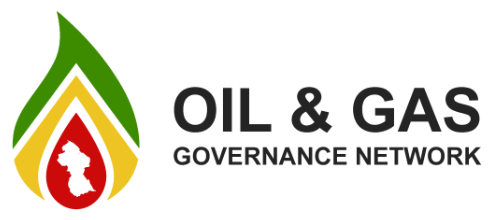By guest writer, Donald Rodney
In April 2021 the Escazú agreement became effective and President Irfaan Ali on the occasion said, “Guyana as a signatory to the ‘Agreement’ hereby endorses the right of access to environmental information. It welcomes public participation in the environmental decision-making process. It supports access to justice in environmental matters and commits to working to ensure the right of every person to live in a healthy environment.”[ ] Guyanese today and for time to come, may well need to test the President and his successors in title, on this commitment.
The Agreement is an intensive 40-page document, including two pages of a foreword by the Secretary-General of the UN, António Guterres, in which he hailed the agreement as the only legally binding agreement stemming from the UN Conference on Sustainable Development (in Rio + 20) and the global first to include provisions on human rights defenders. [ ] The agreement he also said “…[was] negotiated by States with significant participation of civil society and the wider public”: as some context to the agreement, delegates from eight Caribbean governments participated in the drafting, which no doubt also benefitted from a joint publication in 2018 of the environmental legal framework and case law from courts in the Caribbean sub-region, by the UN Economic Commission for Latin America and the Caribbean (ECLAC) and the Academy of Law, Caribbean Court of Justice (CCJ).[ ] (See online, ‘Ensuring environmental access rights in the Caribbean region’, using the title as search words. António Guterres also called the Escazú agreement “a powerful instrument to avoid conflict”.)
Anand Goolsarran has offered two presentations in the Stabroek News ‘Accountability Watch’ section in June 2021 which can assist public awareness of the provisions of the agreement. This presentation seeks to inform, through the normal communication channel of Transparency Institute Guyana Inc. (TIGI), on how the public can utilize the provisions to claim the rights stated in the Escazú agreement. TIGI’s general mission involves advocacy and education of Guyanese citizens in the worldwide fight against corruption, and current programmes include the goal of achieving ‘open government’
The objective of the Escazú Agreement is to guarantee effective implementation in Latin America and the Caribbean of rights of access to environmental information, which information comes under the regime of the agreement and is therefore carved out from the global right of access to information, which will now come under the previous, separate legal regime.
Why the carve-out?
The carve-out from the global freedom of information model no doubt allows for some cultural features of the continent and the Caribbean to be considered; features intended to guide and mould into a new norm taking existing culture into account. By way of elaboration here are some of the more poignant features selected from the preface of the Escazú agreement included by the Executive Secretary of ECLAC:
Democracy. Recognition of principles that seek to address the region’s particular challenges of inequality and a deep-rooted culture of privilege. For example, the State shall ensure that assistance is provided particularly to those groups in vulnerable situations to facilitate the exercise of their access rights (Escazú agreement, Art. 4); and shall guarantee that groups in vulnerable situations, including indigenous peoples and ethnic groups, receive assistance in preparing their requests for information and obtain a response (Art. 5). The Agreement vows to include those that have traditionally been underrepresented, excluded, or marginalized and give a voice to the voiceless, leaving no one behind.
Transparency. The agreement tackles the region’s culture of narrow, fragmented interests. Art. 8 provides that the State shall guarantee the right of access to justice in environmental matters, through competent State entities with access to expertise in environmental matters and effective, public, transparent and impartial procedures with the possibility of ordering interim measures to prevent or mitigate damage to the environment. Transparency is the core interest of TIGI as the lack thereof poses huge risks in Guyana of conflict of interest, amongst other dangers, in the environment and beyond.
Human rights. Recognition of the work of public and human rights defenders and their contributions in environmental matters. The agreement devotes Art. 9 entirely to such defenders, whereby the State shall guarantee a safe and enabling environment for such persons taking measures to prevent, investigate and punish attacks, threats or intimidations that human rights defenders in environmental matters may face. Under Art. 10 the State may develop capacity-building programmes for national human rights institutions. In addition to the hail-up of these provisions by António Guterres above, the Executive Secretary of ECLAC called the agreement “a human rights treaty”.
Trust and legal certainty. Art. 5 states that the State “shall ensure the public’s right of access to environmental information …[and]… shall guarantee that … [those in vulnerable situations] receive assistance in preparing their requests and obtain a response.” This language implies that the State will enact legislation to give effect to these rights. In a region where trust in public institutions is shaky, the firm base on statute and on human rights empowers citizens to seek justification via national courts or international human rights courts.
Applicant, competent authority, and a watchdog
So then, access to information and access to justice are central pillars to the agreement. So too is sustainable development, in the stated objective in Art. 1. The last named pillar on its own has elements of society including culture, the environment, and the economy – with at times incompatible growth and development issues. So how does the agreement bring all these together in a supposedly binding legal document? It starts by hinging an important role on created “competent authorities” which must be staffed by environmental technical experts: when an applicant requests information from a competent authority, such information must be delivered within 30 days, otherwise the authority must inform the applicant of the right to appeal, and – repeat, and – the requirements for the appeal. All this is new for Guyana.
An independent oversight institution must be established to ensure the competent authorities comply with the rules, and both the authorities and the oversight ‘watchdog’ must have a statutory basis. A great deal more will have to be said and learnt about these two proposed institutions in the years ahead.
‘Nevertheless’ — a cavalier attitude
In May 2021 the independent newspapers reported that TriStar Incorporated, a developer of a shore-based facility in the petroleum sector, had already destroyed an over-sized section of mangroves on the west bank of the Demerara River, near a place named Malgre Tout, in flagrant violation of the laws of Guyana. Flagrant violation, since the developer knew that the company required a permit before destroying mangroves, or ought to have known the same by virtue of proper undertaking of the riverside development; and knew he or she had no such permit. Despite this the developer openly cleared the swathe of mangroves.
At least one resident of the area and the NDC objected or sought to elicit answers from the environmental and oversight State agencies, unsuccessfully so. The political opposition raised objections to the destruction as well. The action was thus contrary to the clear public interest in the preservation of mangroves and ultimately in violation of the Escazú Agreement which the President had lauded only a few weeks before.
Subsequently, newspaper reports said that the developer is seeking to address public concerns. But before this, the response to the mangrove destruction by some executive and legislative members of government, no less, has been adverse: at a press conference, giving precedence to riverside infrastructure over protecting associated mangroves and eco-systems. Also, the Ministers publicly committed to further such change and development without a hint of “…[welcoming] public participation in the environmental decision-making process”. Meanwhile little information is forth-coming from the oversight State agencies. Hence despite governmental signature to the Escazú agreement there is evidence of a cavalier attitude towards its implementation. Citizens should anticipate that positive action is required to hold the Guyana government to this regional agreement.
Conclusion
The Escazú agreement is flexible on the process of how access to environmental information is achieved through the competent authorities, the oversight body and the courts. This and other aspects will be explored further, by and on behalf of TIGI, in Part Two.







